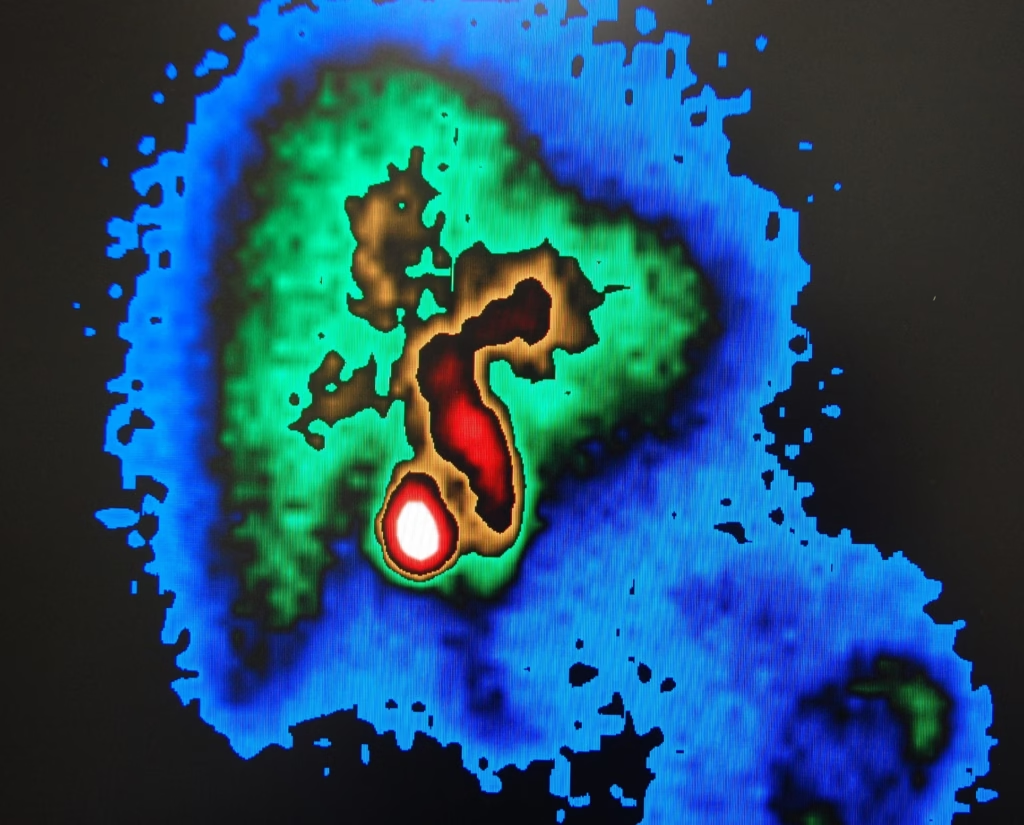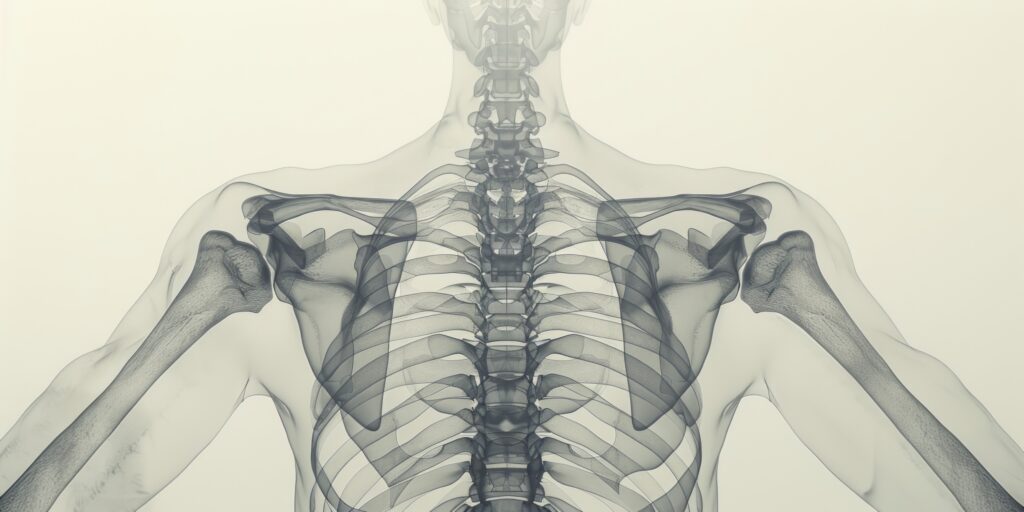Blood pressure is a critical aspect of cardiovascular health, yet many people do not fully understand what it is, how it works, and why it matters. This article provides an in-depth look at blood pressure, including its definition, the factors that influence it, the risks associated with high or low blood pressure, and practical strategies for managing blood pressure effectively. Whether you are looking to understand your own blood pressure readings or seeking ways to maintain healthy levels, this guide offers valuable insights and tips.
Introduction to Blood Pressure
Blood pressure is a vital sign that reflects the force exerted by circulating blood on the walls of the body’s arteries, the major blood vessels that carry blood from the heart to the rest of the body. Blood pressure is measured in millimetres of mercury (mmHg) and is recorded with two numbers: systolic pressure and diastolic pressure.
- Systolic Pressure: The first (and higher) number measures the pressure in your arteries when your heart beats.
- Diastolic Pressure: The second (and lower) number measures the pressure in your arteries when your heart rests between beats.
A typical blood pressure reading is written as 120/80 mmHg, where 120 represents the systolic pressure, and 80 represents the diastolic pressure. Understanding these numbers is crucial for interpreting your blood pressure levels and recognising when they might indicate a potential health issue.
Factors Influencing Blood Pressure
Blood pressure is influenced by a variety of factors, some of which are within your control, while others are not. Key factors include:
- Age: Blood pressure tends to rise with age due to changes in the arteries, which may become stiffer over time.
- Genetics: Family history plays a significant role in determining your blood pressure. If high blood pressure runs in your family, you may be at an increased risk.
- Diet: High sodium intake, excessive alcohol consumption, and a diet low in fruits and vegetables can contribute to elevated blood pressure.
- Weight: Obesity is a major risk factor for high blood pressure. The more you weigh, the more blood is needed to supply oxygen and nutrients to your tissues, increasing the pressure on your artery walls.
- Physical Activity: Lack of physical activity can lead to weight gain and increased blood pressure. Regular exercise helps to keep the heart strong and reduces the likelihood of high blood pressure.
- Stress: Chronic stress may contribute to an increase in blood pressure. Stress-related habits, such as overeating, smoking, or consuming alcohol, can further elevate the risk.
- Medications: Certain medications, including oral contraceptives, over-the-counter pain relievers, and some prescription drugs, can increase blood pressure.
The Importance of Blood Pressure Management
Managing blood pressure is crucial for maintaining cardiovascular health and preventing complications such as heart disease, stroke, and kidney disease. Both high blood pressure (hypertension) and low blood pressure (hypotension) can lead to significant health issues.
Hypertension: The Silent Killer
Hypertension, often referred to as the “silent killer,” is a condition where the blood pressure in your arteries is consistently too high. Many people with hypertension are unaware of their condition because it usually has no symptoms until significant damage has occurred.
Risks Associated with Hypertension
- Heart Disease: High blood pressure can cause the heart to work harder than normal, leading to thickening of the heart muscle and increasing the risk of heart failure.
- Stroke: Hypertension is a leading cause of stroke. It can damage and weaken the brain’s blood vessels, causing them to narrow, rupture, or leak. Hypertension can also lead to blood clots in the arteries leading to the brain, blocking blood flow and potentially causing a stroke.
- Kidney Damage: The kidneys filter excess fluid and waste from the blood—a process that requires healthy blood vessels. High blood pressure can damage the vessels in the kidneys, leading to kidney failure.
- Vision Loss: High blood pressure can damage the blood vessels in the eyes, leading to vision loss or blindness.
- Sexual Dysfunction: Hypertension can lead to erectile dysfunction in men and decreased libido in women due to impaired blood flow.
Hypotension: When Blood Pressure is Too Low
Hypotension, or low blood pressure, occurs when the pressure of the blood circulating through your arteries is abnormally low. While low blood pressure is less common than high blood pressure, it can still cause serious health problems, especially if it leads to inadequate blood flow to vital organs.
Risks Associated with Hypotension
- Dizziness and Fainting: Low blood pressure can cause dizziness, light-headedness, or fainting, particularly when standing up quickly. This can lead to falls and injuries.
- Shock: Extremely low blood pressure can lead to shock, a life-threatening condition where your organs do not get enough blood and oxygen.
- Heart and Brain Issues: Prolonged low blood pressure can prevent your heart and brain from receiving enough oxygen, potentially leading to heart damage, cognitive decline, or stroke.
Diagnosing Blood Pressure Issues
Diagnosing blood pressure issues involves regular monitoring and assessment by a healthcare professional. Blood pressure readings are taken using a device called a sphygmomanometer, which can be done in a clinical setting or at home with a home blood pressure monitor.
How to Measure Blood Pressure
- Preparation: Before taking a reading, sit quietly for five minutes. Ensure that you are in a comfortable position with your back supported and feet flat on the floor. Avoid caffeine, exercise, and smoking for at least 30 minutes before measuring your blood pressure.
- Positioning: Place the cuff on your upper arm, just above the elbow, ensuring that it is snug but not too tight. The cuff should be at the same level as your heart.
- Taking the Reading: Inflate the cuff until it tightens around your arm and then slowly release the pressure. The first sound you hear through the stethoscope represents the systolic pressure, and the point where the sound disappears indicates the diastolic pressure.
Blood Pressure Categories
The National Health Service (NHS) categorises blood pressure into several levels:
- Normal: Systolic less than 120 mmHg and diastolic less than 80 mmHg.
- Elevated: Systolic between 120-129 mmHg and diastolic less than 80 mmHg.
- Hypertension Stage 1: Systolic between 130-139 mmHg or diastolic between 80-89 mmHg.
- Hypertension Stage 2: Systolic 140 mmHg or higher or diastolic 90 mmHg or higher.
- Hypertensive Crisis: Systolic higher than 180 mmHg and/or diastolic higher than 120 mmHg, requiring immediate medical attention.
Managing Blood Pressure Through Lifestyle Changes
Managing blood pressure often begins with lifestyle changes that can significantly impact your cardiovascular health. Here are some effective strategies:
Dietary Adjustments
- Reduce Sodium Intake: Limit your sodium intake to no more than 2,300 mg per day, and ideally, aim for 1,500 mg per day if you have high blood pressure. Avoid processed foods and choose low-sodium alternatives.
- Eat a Balanced Diet: Focus on a diet rich in fruits, vegetables, whole grains, and lean proteins. The DASH (Dietary Approaches to Stop Hypertension) diet is particularly effective in lowering blood pressure.
- Limit Alcohol: Drinking alcohol in moderation is key. For men, this means up to two drinks per day, and for women, one drink per day.
Regular Physical Activity
Engaging in regular physical activity helps to lower blood pressure and strengthen the heart. Aim for at least 150 minutes of moderate-intensity exercise, such as brisk walking, cycling, or swimming, each week. Include strength training exercises at least twice a week to improve overall cardiovascular health.
Weight Management
Maintaining a healthy weight is crucial for managing blood pressure. Losing even a small amount of weight if you are overweight can have a significant impact on lowering your blood pressure. Body Mass Index (BMI) is a useful tool to assess whether your weight is within a healthy range.
Stress Management
Chronic stress can contribute to high blood pressure, so finding ways to manage stress is important. Techniques such as deep breathing exercises, meditation, yoga, and mindfulness can help reduce stress levels. Ensuring adequate sleep and taking time for relaxation and hobbies are also beneficial.
Medical Treatments for Blood Pressure Control
In some cases, lifestyle changes alone may not be sufficient to control blood pressure, and medication may be necessary. Several types of medications are commonly used to treat high blood pressure, each working in different ways to lower blood pressure.
Types of Blood Pressure Medications
- Diuretics: Often referred to as “water pills,” diuretics help the kidneys remove excess sodium and water from the body, reducing blood volume and lowering blood pressure.
- ACE Inhibitors: Angiotensin-converting enzyme (ACE) inhibitors help relax blood vessels by blocking the formation of a natural chemical that narrows blood vessels.
- ARBs: Angiotensin II receptor blockers (ARBs) also help relax blood vessels by blocking the action of a natural chemical that can tighten blood vessels.
- Calcium Channel Blockers: These medications help prevent calcium from entering the cells of the heart and blood vessels, allowing the blood vessels to relax.
- Beta-Blockers: Beta-blockers reduce the workload on the heart and open up blood vessels, causing the heart to beat slower and with less force.
Working with Your Healthcare Provider
It’s important to work closely with your healthcare provider to determine the most appropriate treatment plan for your specific condition. Your healthcare provider may prescribe one or more of these medications depending on the severity of your hypertension and any other health conditions you may have. Regular follow-up appointments are essential to monitor the effectiveness of the treatment and make any necessary adjustments.
Monitoring and Maintaining Blood Pressure at Home
In addition to regular check-ups with your healthcare provider, monitoring your blood pressure at home can be an effective way to keep track of your cardiovascular health. Home monitoring can help you stay on top of your blood pressure levels, allowing you to notice any changes and take action promptly.
Choosing a Home Blood Pressure Monitor
When selecting a home blood pressure monitor, it’s important to choose one that is easy to use and provides accurate readings. Look for a monitor that has been validated for accuracy by relevant medical authorities. Automatic monitors with a cuff that fits around the upper arm tend to be more accurate than wrist or finger monitors.
How to Properly Use a Home Monitor
- Consistency is Key: Try to take your blood pressure at the same time each day, preferably in the morning before you eat or take any medications.
- Record Your Readings: Keep a log of your blood pressure readings, noting the date, time, and any circumstances that might have influenced the reading, such as stress or physical activity.
- Understand Your Results: Knowing what your readings mean is crucial. If you consistently get readings above 120/80 mmHg, you may need to consult with your healthcare provider to discuss possible lifestyle changes or medication adjustments.
The Role of Regular Check-Ups in Blood Pressure Management
While home monitoring is an excellent tool, regular check-ups with your healthcare provider are indispensable. During these visits, your provider can offer more precise measurements, assess your overall health, and adjust your treatment plan as needed.
What to Expect During a Check-Up
- Blood Pressure Measurement: Your healthcare provider will take your blood pressure using a more accurate device, often multiple times to ensure accuracy.
- Physical Examination: A general physical examination will help your provider check for any signs of complications related to blood pressure, such as heart disease or kidney issues.
- Lab Tests: Blood tests may be ordered to check for underlying conditions that could affect your blood pressure, such as diabetes or high cholesterol.
- Medication Review: If you are on blood pressure medications, your provider will review your current regimen and make any necessary adjustments.
Complications of Uncontrolled Blood Pressure
If left uncontrolled, both high and low blood pressure can lead to serious health complications. Understanding these potential risks is crucial for anyone looking to maintain or achieve optimal blood pressure levels.
Complications of Hypertension
- Heart Attack and Stroke: As mentioned earlier, hypertension is a major risk factor for both heart attack and stroke. The increased pressure can damage arteries, leading to the formation of plaques, which can rupture and cause a heart attack or stroke.
- Aneurysm: High blood pressure can cause blood vessels to weaken and bulge, forming an aneurysm. If an aneurysm bursts, it can lead to life-threatening internal bleeding.
- Heart Failure: Over time, the increased workload caused by high blood pressure can cause the heart muscle to thicken. This can eventually lead to heart failure, where the heart is unable to pump blood effectively.
- Kidney Disease: Chronic high blood pressure can damage the blood vessels in the kidneys, leading to kidney disease or even kidney failure.
- Metabolic Syndrome: This syndrome is a cluster of conditions—high blood pressure, high blood sugar, excess body fat around the waist, and abnormal cholesterol levels—that increase the risk of heart disease, stroke, and diabetes.
Complications of Hypotension
- Falls and Injuries: The dizziness and fainting associated with low blood pressure can lead to falls and subsequent injuries, particularly in older adults.
- Shock: As previously mentioned, severe hypotension can lead to shock, a life-threatening condition that requires immediate medical attention.
- Organ Damage: Prolonged low blood pressure can cause a lack of blood flow to organs such as the heart, brain, and kidneys, leading to organ damage and failure.
Special Considerations for Different Populations
Blood pressure management may vary depending on age, gender, and other individual factors. Understanding how these variables influence blood pressure can help tailor more effective strategies for different populations.
Blood Pressure in Older Adults
As people age, their blood vessels naturally become less flexible, leading to an increase in blood pressure. This makes hypertension more common in older adults. It is important for older individuals to monitor their blood pressure closely, as they may be more susceptible to the complications associated with high blood pressure.
- Isolated Systolic Hypertension: This is a common condition in older adults, where the systolic pressure is elevated while the diastolic pressure remains normal. It is particularly important to manage this form of hypertension to prevent strokes and heart attacks.
- Postural Hypotension: Older adults are also at a higher risk for postural hypotension (a sudden drop in blood pressure upon standing). This condition can lead to dizziness and falls, so it’s important to rise slowly from sitting or lying down.
Blood Pressure in Women
Women may experience changes in blood pressure at various stages of life, particularly during pregnancy and menopause.
- Pregnancy: Some women may develop high blood pressure during pregnancy, known as gestational hypertension or preeclampsia. Both conditions require careful monitoring and management to ensure the health of both the mother and baby.
- Menopause: Hormonal changes during menopause can lead to an increase in blood pressure. Women going through menopause should have their blood pressure checked regularly and make lifestyle adjustments as needed.
Blood Pressure in Children and Adolescents
While high blood pressure is less common in children and adolescents, it is becoming increasingly prevalent due to rising rates of obesity. Regular blood pressure checks are important for young people, especially if they have other risk factors such as obesity, a family history of hypertension, or certain medical conditions.
The Future of Blood Pressure Management
Advances in technology and medical research continue to improve the management of blood pressure. Innovations in monitoring devices, personalised medicine, and new treatment options are making it easier to manage blood pressure effectively.
Wearable Technology
The development of wearable devices that continuously monitor blood pressure is a promising advancement. These devices allow for real-time tracking and can alert individuals to any sudden changes in their blood pressure, providing an early warning system for potential issues.
Personalised Medicine
Personalised medicine, which tailors treatment based on an individual’s genetic makeup, is becoming increasingly relevant in blood pressure management. Genetic testing can help identify individuals who may be more responsive to certain types of medications, allowing for more targeted and effective treatment strategies.
New Treatment Options
Research into new medications and therapies for blood pressure management is ongoing. These new treatments aim to provide more options for individuals who do not respond well to traditional medications, offering hope for better management of blood pressure in the future.
Conclusion: Taking Charge of Your Blood Pressure
Understanding and managing your blood pressure is vital for maintaining overall health and preventing serious complications. By being aware of the factors that influence blood pressure, regularly monitoring your levels, and making necessary lifestyle changes, you can take control of your cardiovascular health.
Remember that managing blood pressure is a lifelong commitment. Regular check-ups with your healthcare provider, adherence to prescribed medications if necessary, and maintaining a healthy lifestyle are all key components of successful blood pressure management. With the right knowledge and tools, you can protect your heart, reduce your risk of complications, and enjoy a healthier, longer life.
Disclaimer
The content provided in this article, Blood Pressure Explained: Understanding and Managing Cardiovascular Health, is intended for general informational and educational purposes only. It is not intended to be, nor should it be considered as, medical advice, diagnosis, or treatment. Always seek the advice of your doctor, general practitioner, or other qualified healthcare professional with any questions you may have regarding a medical condition, diagnosis, or treatment.
Open Medscience does not endorse or recommend any specific tests, physicians, procedures, treatments, or opinions mentioned in this article. Any reliance you place on the information contained in this article is strictly at your own risk.
Information contained in this article is accurate to the best of our knowledge as of the publication date (07 September 2024), but medical knowledge and guidelines may change over time. You should not disregard professional medical advice or delay in seeking it because of something you have read on this website.
If you are experiencing symptoms or suspect a health problem, contact a healthcare provider promptly. In case of emergency, call your local emergency services immediately.
You are here: home » diagnostic medical imaging blog »



